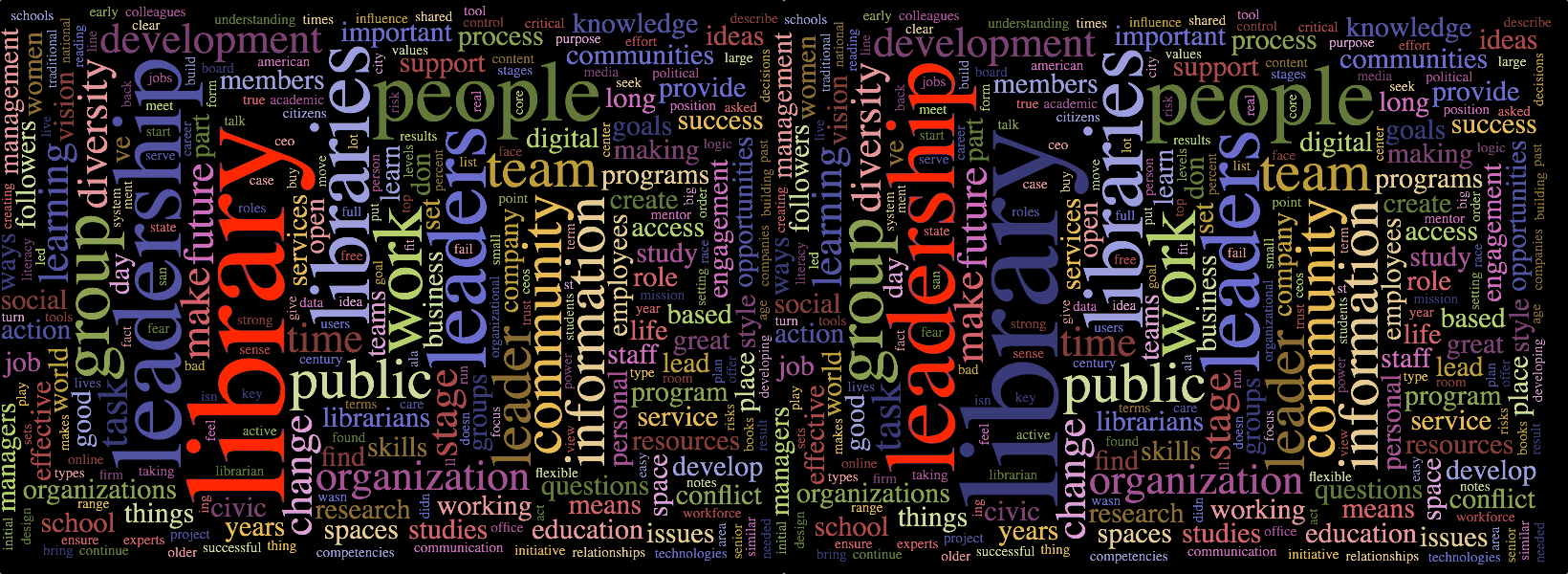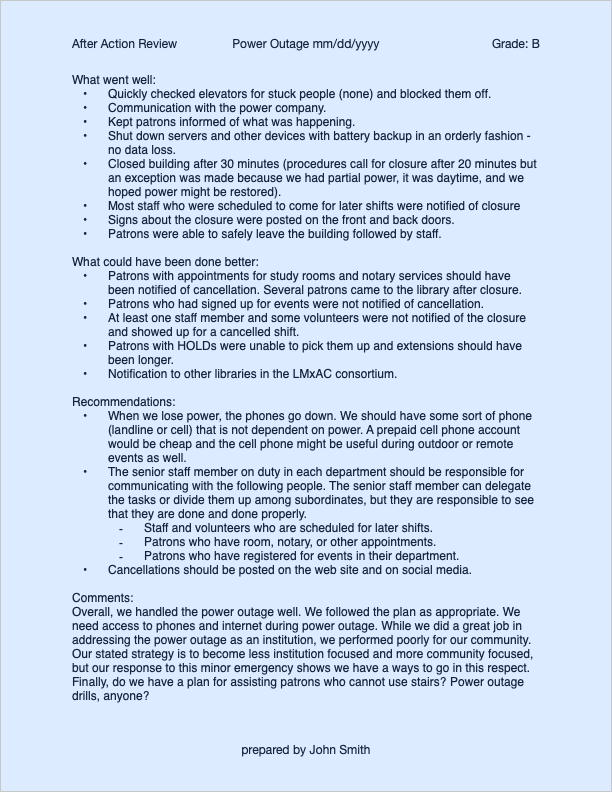One of the first things I tell any new staff member at the library is, “Remember, each task you perform is affected by the way someone else did their tasks and will, in turn, affect someone else. You may perform your task alone but the task sits in a long chain of cause and affect. So perform your task knowing that how you do it affects a colleague or a patron.”
Henry Ford famously introduced the assembly line to automobile manufacturing. Each worker had a specific task that he (usually it was a “he,” until World War II came along) repeated again and again as part of a long chain of assembly. Economists and sociologists associated this atomization of tasks with a disconnect between workers and the products they produced, resulting in a steady erosion of quality because workers didn’t notice or care about the end product. Craftsmanship gave way to mechanical production and efficiency, and workers no longer knew or cared how the work they did affected either the work done by their fellow workers or the finished product that landed in the hands of customers.
Work in contemporary libraries can often result in the same disconnect. Staff hum along at their jobs simply going through the motions and passing along the results to the next person in the chain without thinking much about what the next person does or how their own work affects that person’s job. My admonition to new staff often seems to come as a surprise because we don’t think about our work as impacting others. Here are a couple of examples I have run across.
-
- Inter-library loans (ILLs) coming in from other libraries sometimes have little slips taped to the cover of the books with the name of our library on them. Undoubtedly, the slips helped the staff or volunteers at the sending library know in which bag or box to put the item so it would come to us. Very useful for them. However, the tags serve no purpose to us or our patrons who are borrowing the item. By leaving the slip taped to the item, the sending library is offloading the task of removing the slip (and perhaps damaging the cover of the item) from themselves onto us. Yes, it’s petty. I agree. But I hope you see the point.
- When putting returned non-fiction items onto shelving carts, some staff are careful to put the items in order as they load them onto the cart. Others are imprecise and just toss returned items onto the shelving cart in approximately the right order. By taking an extra second or two to be sure the items are in the correct sequence, one staff member would save other staff the time and trouble of first noticing and then fixing the error. In addition, such carelessness can compound the added work created because subsequent items added to the shelving cart may be placed incorrectly even if this staff member is making a concerted effort to be careful. When the cart goes out for shelving, the staff member or volunteer has to take the time and trouble to fix the errors. Another petty example, but the lack of consideration shows poor teamwork and reflects a culture of indifference to teammates.
- Back to the subject of ILLs…. Processing ILLs (packing outgoing and unpacking incoming ILLs) used to be a task assigned to adult volunteers who would come mid-day to do the job. The decision was made to switch to high school volunteers. High school students are only available after school, so ILLs get packed in the late afternoon. This has a couple of consequences.
- Outgoing ILLs are pulled from the shelves in the morning and the ILL driver picks up outgoing ILLs in the early afternoon. However, since ILLs don’t get packed until late afternoon, outgoing ILLs don’t get packed until the driver has left, so they sit in our library waiting to be picked up for more than 24 hours after they have been pulled from shelf. As a result, patrons in other libraries have to wait an extra day for the items they requested.
- Similarly, incoming ILLs are not unpacked until well after they have arrived and the staff who need to check them in can’t do their part of the work until the students are finished unpacking. Sometimes this puts the staff in an awkward time crunch to get their work done before the end of a shift. Also, notifications to patrons could be delayed since the notifications go out in batches and late processing means that notifications don’t go out until close to closing time or the next day. Late unpacking, therefore, is also an inconvenience to our patrons. Managing volunteers is a tricky business since they are doing us a favor and we need to accommodate their schedules, but for time-sensitive tasks the volunteer manager needs to put in a little extra thought and consideration in choosing volunteers and making arrangements. Or the staff has to do the job. The timing of these tasks affects patrons as well as other staff and that’s important.
These examples have relatively trivial consequences, but collectively they can have a substantive impact on the library’s work culture and the quality of patron services. Two relatively straightforward changes will facilitate repair of these broken systems and prevent similar issues from arising in the future.
-
- Create an environment in which staff are aware of and care about the impact their work has on other people, including staff and patrons.
- Cultivate an openness to change and communication about ways to improve. Avoid blame or finger pointing. Focus on process and consequences.
You’ll notice that both of these are driven by organizational culture. If staff feel that change and improvement are normal and healthy, then they will be less resistant to it. If they feel that other people are being considerate of them, they will be more welcoming of suggestions on how to better accommodate the needs of their colleagues and the patrons.

